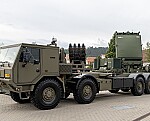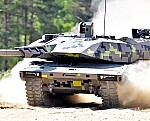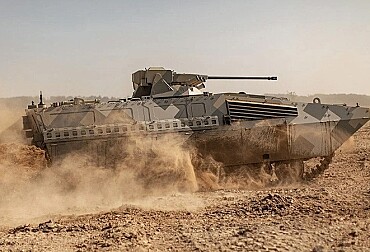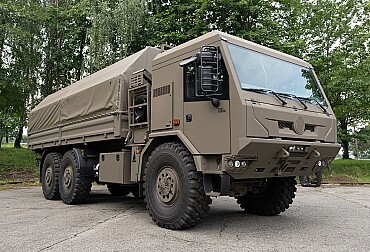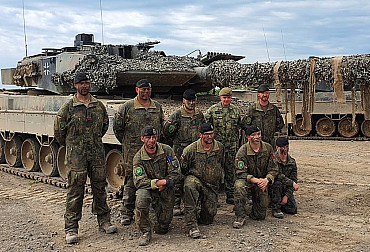Bohdana and CAESAR self-propelled howitzers production is increasing
The ongoing conflict in Ukraine is reflected, among other things, in a significant increase in the rate of production of weapon systems. One of the key ones is self-propelled artillery. Ukraine is increasing production of Bohdana howitzers. In France, KNDS plans to increase production of CAESAR howitzers.
The production of the Ukrainian Bohdana artillery systems should reach eight units per month. Recently, its new version was officially deployed. At the beginning of December last year, Ukrainian President Volodymyr Zelenski announced that the current production of the 2S22 Bohdana artillery system was to be six copies per month. Shortly thereafter, the Ukrainian Ekonomiya Pravda reported that the Ukrainian Armed Forces had ordered around 30 Bohdana units, which meant, given the scale of production at the time, deliveries would be spread over several months.
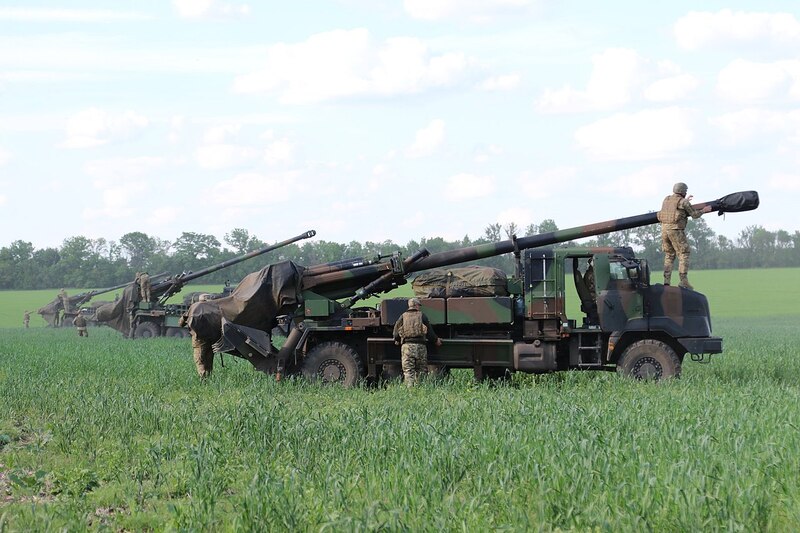
The New York Times, on the other hand, reported recently an increase in the number of 2S22s produced to eight units per month. This information is probably linked to the implementation of version 4.0, which is being developed on the basis of the chassis of the civilian variant of the Tatra in the form of the Phoenix version. It is possible that other second-hand chassis from the Czech manufacturer are being used alongside these.
The first photos showing the new version of the Ukrainian artillery system appeared at the beginning of January, indicating that work on this variant had already been underway for several months, as had been announced. The reason for its development is a kind of temporariness, the carrier of version 2.0 in the form of the MAZ-6317 truck (manufactured under Belarusian licence for several years at the now-closed Bohdana plant) and the long wait for the Czech Tatra T815-7T3RC1 with its modular armoured Puma cab. Thus, the transition to the new chassis may have resulted in an increase in Bohdana production volumes on a monthly basis. It is likely that the 3.0 and 4.0 versions are now mainly supplied to the Ukrainian Army.
The 2S22 Bohdana is a Ukrainian 155mm calibre self-propelled cannon howitzer on a wheeled chassis. The armament system, including the body, was developed by the Novokramator Machine Building Plant (NKMZ) of Kramatorsk. The main armament was originally mounted on a KrAZ-6322 military truck in 6x6 configuration with an armoured cab, a variant of the vehicle used by the Armed Forces of Ukraine. Faced with structural problems at the KrAZ plant after the Russian invasion, the carrier was replaced. The chassis of the new units is the Belarusian 6x6 truck MAZ-6317 (produced under licence under the name Bogdan-6317). The vehicle has been given a cab similar in shape to that used on the RKP-360 command vehicle, part of the R-360 Neptun (2.0) anti-ship system squadrons.
Another alternative carrier is the 8x8-powered Tatra T815-7T3RC1 equipped with the modular armoured Puma cab (3.0). It is now also being integrated into civilian Tatra truck models (e.g. Phoenix) equipped with a cab similar to the 2.0 version, which are referred to as the 4.0 version. The system can also be mounted on trucks of other types, such as MAN vehicles. In its original configuration (on the KrAZ-6322 chassis), the total weight of the vehicle is 28 tonnes, and the ammunition supply carried is 20 rounds and sets of propelling charges. The cannon howitzer is equipped with a modern fire control system and its firing rate is expected to be 5–6 shots per minute. The maximum range is 40km when using bottom gas-generated ammunition and 50–60km for rocket-assisted missiles, respectively.
Artillery for Ukraine – three times more CEASARs compared to 2022
In January, France took the lead in the "Artillery for Ukraine" coalition and set itself the target of delivering up to 78 CAESARs to the Ukrainian army, in addition to the 49 already supplied, of which 30 were taken from the French Army's inventory and 19 handed over by Denmark: "Our initiative aims to produce 78 CAESARs by 2024, by encouraging Europeans and our allies to share the bill. France will initiate the financing to get the others on board. Ukraine itself is prepared to put in a little of its own money: it has just bought 6 CAESAR from its own funds to kick-start the initiative. This system should also work for ammunition", explained Sébastien Lecornu, the French Minister for the Armed Forces in Le Parisien.
In addition to the 6 CAESARs ordered by Kiev, Paris will finance a further 12, with the remaining 60 to be financed as part of the "Artillery for Ukraine" coalition. Denmark recently pledged a financial contribution. To honour this commitment, Nexter, or KNDS France, and its subcontractors, including Arquus (chassis) and Aubert & Duval (steel), had previously prepared to produce up to six CAESARs per month. That's three times more than in 2022.
With a full order book, Nexter drew inspiration from the processes used by the automotive industry, by setting up assembly lines. It has also built up stocks with its suppliers in order to protect itself against any supply shortages. Another advantage of this kind of organisation is that it reduces delivery times, which can be an asset when it comes to winning other export contracts. But there are clearly plans to go even further, by doubling the production rate. This is what Mr Lecornu said, alongside Antony Blinken, the head of US diplomacy, during a visit to Nexter's headquarters in Satory: "The CAESAR gun has become the symbol of this artillery coalition, with a significant increase in production capacity: two per month and now six per month. We are going to increase production to 12 guns per month in the near future. This will demonstrate our ability to meet the needs not only of Ukraine but also of all our European partners, NATO members who are in the process of acquiring weapons systems to contribute to their collective defence and deterrence."
CAESAR (Camion Équipé d'un Système d'Artillerie) is a wheeled traction self-propelled cannon howitzer. It is adapted to be mounted on the chassis of various trucks in 6x6 or 8x8 configuration, according to customer requirements. The most commonly used carriers are Renault Sherpa 5, Mercedes-Benz Unimog (both 6x6) and Tatra 815-7 (8x8). CAESAR has a 155 mm calibre main armament with an L/52 barrel (approximately 8 metres long), which has a maximum range of more than 40 km when firing fragmentation and demolition shells with a bottom gas generator. CAESAR uses a wide range of JBMoU-compatible ammunition, including classic fragmentation and demolition, BONUS anti-tank and the new Katana 155mm guided missiles.
With regard to wheeled self-propelled howitzers, the Ukrainian Army currently operates the ShKH M 77 DANA and DANA M2 (152 mm calibre), 2S22 Bohdana (155 mm calibre), CAESAR (155 mm calibre), RCH-155 (155 mm calibre), ShKH Zuzana (155 mm calibre), Archer (155 mm calibre) and DITA (155 mm calibre) systems.



